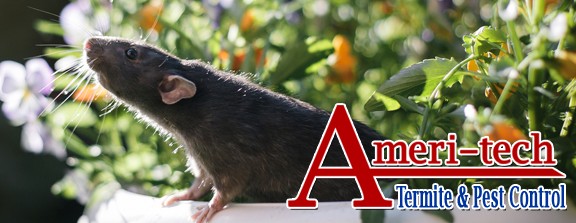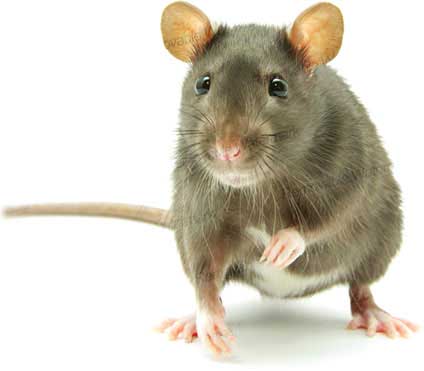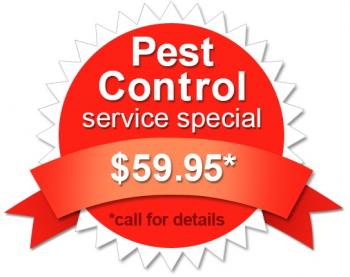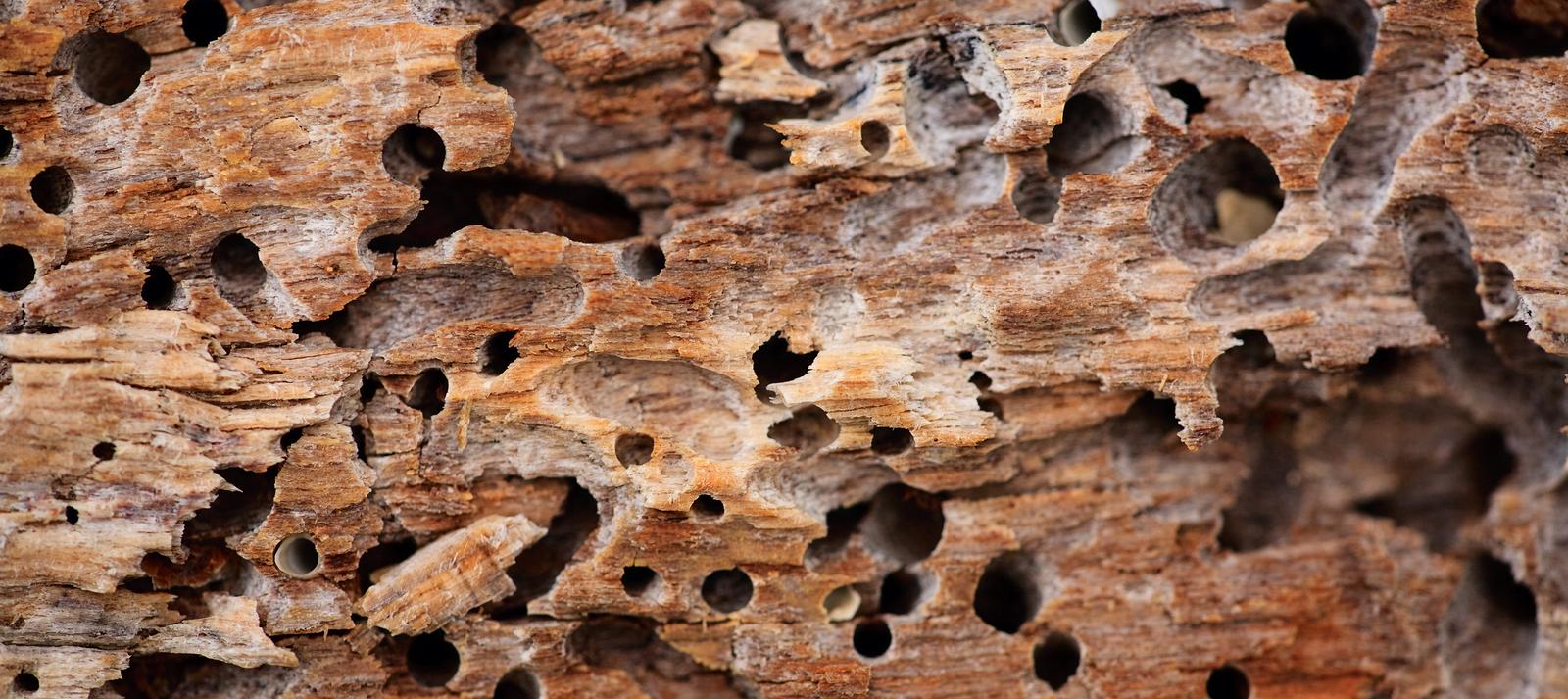Little Elm, TX Pest Control
How the Climate in Little Elm, TX Fuels Pest Problems
The subtropical climate of Little Elm, TX, with its warm temperatures and high humidity, creates an ideal environment for pests to thrive. This type of climate not only allows pests to survive year-round, but it also accelerates their breeding cycles, leading to increased population numbers.
Common Pest Concerns in Little Elm
-
Mosquitoes: The warm, wet conditions are perfect for mosquitoes to breed, resulting in swarms that can become a major nuisance.
-
Termites: These pests flourish in humid environments, quietly causing structural damage that can lead to costly repairs.
-
Ants and Cockroaches: Both are drawn to the warmth and moisture typical of the region, easily entering homes in search of food and shelter.
-
Rodents: A robust breeding season for mice and rats means they are often noticed seeking refuge indoors, particularly during colder spells.
Climate's Impact on Pest Management
The consistent warmth and moisture levels mean that pest control isn't just a seasonal concern; it's a year-round necessity. Effective pest management in Little Elm involves regular monitoring and timely interventions to prevent infestations before they become overwhelming. Residents often need to employ integrated pest management strategies that combine regular inspections, maintenance, and targeted treatments to keep these unwelcome guests at bay.
How Can Little Elm TX Homeowners Keep Pests Out?
Maintaining a pest-free home involves a proactive approach and implementing multiple strategies to guard against unwanted visitors. Here are some effective preventative measures:
-
Seal Entry Points
Start by inspecting your home for potential entry points. Small gaps around windows, doors, and the foundation can be sealed with caulk or weatherstripping to prevent pests from sneaking in. -
Use Pesticide Sprays
Employ reputable pest control sprays, like Raid or Ortho, around the perimeter of your home and in common entry areas. Follow the instructions carefully to ensure effective and safe use. -
Adopt Home Remedies
Natural deterrents can complement your defense plan. Consider using peppermint oil, which is known to repel ants and spiders, or diatomaceous earth, which is effective against insects such as bed bugs and cockroaches. -
Maintain Cleanliness
Regularly clean and declutter your home, as pests are attracted to food scraps and hidden spaces. Vacuum and wipe down surfaces frequently, and ensure your kitchen and pantry are tidy and free of crumbs. -
Proper Waste Management
Ensure garbage bins are tightly sealed, and dispose of waste regularly. This reduces the attraction to pests like rodents and flies.
By taking these comprehensive actions, you establish a strong line of defense to deter pests and keep your living environment safe and comfortable.
How Can Pest Control Services Ensure Long-Term Protection Against Pests?
Achieving long-term pest control requires more than just periodic treatments; it involves a comprehensive strategy tailored to your unique environment. Here's how:
1. Identify Vulnerable Entry Points
The first step involves a detailed inspection to identify cracks, crevices, and other potential entry points pests could exploit. A professional service will seal these areas to prevent infestations right from the start.
2. Implement an Integrated Pest Management (IPM) Approach
IPM is a multifaceted method that combines biological, mechanical, and chemical tactics to manage pest populations. This can include:
- Biological Control: Using natural predators to manage pests.
- Mechanical Control: Traps or barriers to block pest access.
- Chemical Control: Targeted use of pesticides, applied only when necessary and in an environmentally conscious manner.
3. Regular Monitoring and Maintenance
Consistent monitoring is vital to detect pest activity early. Reputable pest control services offer ongoing maintenance plans to regularly check and treat any emerging issues. This proactive approach ensures pests don't have the chance to re-establish their presence.
4. Educate and Empower Homeowners
Education is crucial for lasting pest control. Services often provide guidance on keeping your environment unattractive to pests, such as proper food storage and waste management techniques.
5. Seasonal Adjustments
Pests can be seasonal; therefore, services tailor treatments to the time of year to combat specific threats, like ants in the summer and rodents in the winter. This adaptable strategy maximizes efficiency.
By employing these strategies, a professional pest control service can offer robust, long-term protection, keeping your living or work space comfortable and pest-free.
Little Elm, TX Pest Treatments
-
Sun
 44 °F
44 °F
Little Elm, TX Pest Control Services
What Type of Warranty or Guarantee Do Pest Control Services Typically Offer?
When it comes to pest control services, many companies stand by their work by offering robust warranties or guarantees. Typically, these guarantees serve to reassure homeowners that, even if pests return, the service provider will address the issue at no extra cost.
Most pest control services include:
-
Service Guarantees: If pests reappear within a specified period after the initial treatment, companies often provide follow-up treatments to tackle the problem.
-
Satisfaction Guarantees: Some companies promise customer satisfaction. If issues persist, they may not only retreat the affected area but also explore additional solutions until the problem is resolved.
-
Comprehensive Warranties: This can include a full refund or free services for a period if the treatment fails to meet expectations.
In essence, these assurances ensure that the pest control company remains accountable for its work, offering peace of mind for homeowners. Always review the specific terms and conditions of any guarantee with the pest control provider to understand the coverage details fully.
The Importance of Annual Pest Inspections for a Pest-Free Home
Maintaining a pest-free home is crucial for the health and safety of your family and the integrity of your property. Regular pest inspections play a pivotal role in achieving this goal. Here's why scheduling annual pest inspections is so important:
-
Early Detection and Prevention: Professional inspections can identify potential infestations before they become significant problems. Experts are trained to spot subtle signs that homeowners might overlook, allowing for early intervention.
-
Cost Savings: Addressing a pest problem early on is generally far less costly than dealing with a full-blown infestation. Annual inspections help avoid expensive treatments and repairs by catching issues before they escalate.
-
Protecting Your Investment: Termites and other pests can cause significant damage to the structure of your home. Regular inspections ensure that any damage is detected early, protecting your investment from potentially severe depreciation.
-
Peace of Mind: Knowing that your home is free from infestations provides peace of mind. Annual checks offer reassurance that your living space is safe and comfortable for you and your loved ones.
-
Environmental Concerns: Regular inspections can help reduce the need for extensive chemical treatments. By managing pests before they spread, you contribute to a more eco-friendly approach to pest control.
In summary, annual pest inspections are a proactive measure every homeowner should consider to maintain a healthy and safe home environment. The benefits far outweigh the cost, providing security and longevity for your property in Little Elm Texas.
How Pest Control Services Enhance Home Safety and Health
When it comes to maintaining a safe and healthy home, pest control services play a crucial role. Here's how they contribute to a better living environment:
Preventing Disease and Infection
Pests such as rodents, mosquitoes, and cockroaches aren't just a nuisance—they can carry and transmit diseases. Effective pest control services eliminate these threats, reducing the risk of infections and illnesses in your household.
Protecting Your Property
Insects like termites and carpenter ants can cause severe structural damage if left unchecked. Professional pest control helps identify and eradicate these invaders before they compromise the integrity of your home, avoiding costly repairs.
Controlling Allergens
Dust mites, cockroaches, and even rodents contribute to indoor allergens, which can trigger asthma and allergic reactions. Regular pest management minimizes these allergens, contributing to better air quality and overall health.
Peace of Mind
Knowing that your home is protected from potential pests allows you and your family to live comfortably. Professional pest services provide regular inspections and treatments, ensuring that any potential invasions are caught early, giving you peace of mind.
Sustainable and Long-Term Solutions
Modern pest control companies often use environmentally-friendly methods and products, prioritizing not just effectiveness but also safety for your family and pets. They offer tailored solutions that address both immediate and long-term pest issues.
By choosing a professional pest control service, you invest in a healthier, safer home environment for your loved ones.
Serving Little Elm, TX

Rodents In Little Elm, TX
Termite Sprayed Little Elm, TX
Termite Treatment in Little Elm, TX
How Do Pest Control Services Address Structural Damages Caused by Pests?
Pests like rodents can wreak havoc on a structure, thanks to their relentless chewing and burrowing behaviors. This can lead to problems such as holes in walls, damage to electrical wires, and accumulation of hazardous waste.
To effectively tackle these issues, pest control services go beyond just extermination. Here's how they address the structural damages caused by pests:
-
Inspection and Assessment: Professionals begin with a thorough evaluation of the premises to identify all the damage and ascertain the extent of the infestation.
-
Sealing Entry Points: Once identified, sealing is essential. Gaps, cracks, and other openings in walls, floors, and exterior surfaces are closed off to prevent further entry of pests. This can include areas around pipelines, vents, and utility lines.
-
Repair of Damaged Areas: Services also extend to repairing holes and any damage made to structural components like wood beams or electrical wiring. This involves using materials suited to withstand further pest activity.
-
Sanitation and Clean-Up: Removing waste left by pests, such as feces and nesting materials, is crucial for health and safety. This cleanup process ensures a healthier and more habitable environment.
By combining structural repairs with strategic prevention tactics, pest control services help restore the integrity and safety of your property while mitigating the risk of future infestations.
How Do Professional Exterminators Ensure Family Safety During Treatments?
Professional exterminators prioritize your family's safety by employing techniques that are both effective and non-hazardous. Here's how they accomplish this:
1. Use of Eco-friendly Tools and Methods
Exterminators select products specifically designed to minimize ecological impact. These solutions are tailored to effectively target pests without posing risks to human health. Products from well-known eco-conscious brands are often chosen for their safety profiles.
2. Thorough Assessment and Customized Plans
Before any treatment begins, experts conduct a detailed inspection of your property. This allows them to develop a customized plan that focuses on the specific pests present, reducing the need for extensive chemical use.
3. Application of Precision Techniques
Precision is key. Professionals are trained to apply treatments in a targeted manner, minimizing exposure to non-pest areas of your home. This includes using advanced equipment that ensures accurate placement away from living spaces.
4. Education and Communication
Exterminators educate homeowners on the procedures being used, ensuring clear understanding of safety measures in place. They take time to explain how treatments work and provide instructions for any necessary precautions during and after the process.
5. Follow-up and Monitoring
Safety doesn't end with the initial treatment. Professionals conduct follow-up visits to ensure effectiveness and adjust methods if needed. Continuous monitoring helps safeguard your home while maintaining a healthy living environment.
By adhering to these practices, professional exterminators effectively balance pest control with your family’s well-being, ensuring peace of mind throughout the process.
Common Mosquito Species in Little Elm
Little Elm Texas is home to a variety of mosquito species, though only a handful typically make their way into residences. Here are some you might encounter:
-
Aedes Aegypti: Often referred to as the Yellow Fever Mosquito, this species is known for its role in spreading various diseases, including yellow fever.
-
Aedes Albopictus: Commonly known as the Asian Tiger Mosquito, it's easily recognizable by its distinct black and white stripes.
-
Culex Species: This group includes the House Mosquito, a prevalent species known for being active during the night.
-
Culex Quinquefasciatus: Also known as the Southern Mosquito, it is another common visitor in Little Elm households.
These mosquito species vary in appearance and behavior, but they all thrive in warm climates such as that of Little Elm Texas.
Professional Methods for Mosquito Control and Prevention in Little Elm TX
Comprehensive Inspection
Effective mosquito control begins with a detailed inspection of your property. Experts meticulously search for mosquito larvae in stagnant water sources and check potential breeding grounds, such as flower beds or damp soil areas. Identifying these hotspots is crucial for developing a tailored eradication plan.
Addressing Stagnant Water
Removing stagnant water is essential in preventing mosquito breeding. Professionals focus on eliminating water from common problem areas like abandoned tires, plant pot saucers, and clogged gutters. In situations where water cannot be easily removed—such as swimming pools—experts devise strategies to prevent these areas from becoming mosquito havens.
Advanced Extermination Techniques
Mosquito eradication involves using cutting-edge tools and techniques. Professionals employ methods like fogging systems and larvicides tailored to target and eliminate mosquitoes at various life stages. These strategies are designed not only to eradicate current mosquito populations but also to inhibit future breeding cycles.
Preventative Measures
To maintain a mosquito-free environment, experts may suggest implementing additional preventative solutions. This includes setting up mosquito traps and using repellents to deter these pests from entering your premises. Traps, such as BG-Sentinel and CDC Light Traps, are strategically placed to capture and reduce mosquito activity effectively.
By integrating these professional methods, a comprehensive mosquito control and prevention plan can be achieved, ensuring a safer and more comfortable environment for everyone.
How Professional Pest Control Services Enhance Real Estate Deals
In the competitive real estate market, securing a successful deal often requires more than just a good asking price or strategic location. Professional pest control services can play a critical role in closing deals by offering comprehensive inspection documentation.
Boosting Buyer Confidence
-
Thorough Inspections: By conducting a detailed pest inspection, these services provide potential buyers with peace of mind, assuring them that the property is free from infestations.
-
Detailed Reports: The documentation provided serves as credible evidence that a property has been evaluated and cleared of any pest-related issues, increasing transparency.
Little Elm TX Mice & Rat Control
Recognizing Signs of a Rodent Infestation
Identifying a rodent infestation early on is crucial to mitigating damage and maintaining a safe environment. Here are some typical indicators that could suggest rodents have taken up residence in your space:
-
Droppings: Finding small, dark fecal pellets is often the first clue. These are usually found near food sources or along a rodent's route.
-
Gnaw Marks: Rodents are notorious for chewing on various materials. Look for gnawed furniture, wiring, or structural components, which can be hazardous and lead to costly repairs.
-
Tracks and Footprints: Dusty areas may reveal tiny footprints or tail marks. A light dusting of flour or talcum powder can help confirm activity in suspected areas.
-
Nesting Signs: Shredded paper, fabric, or plant material provide bedding for rodents. These nests can be found in hidden locations like attics, cupboards, or wall cavities.
-
Nocturnal Noises: Scratching or scurrying sounds within walls or ceilings during the night often indicate active rodents.
-
Unusual Odors: A stale, musky smell can be a sign of a well-established infestation, especially in enclosed spaces.
When inspecting your property, thoroughly examine areas both inside and out, including the attic, ceiling, and places with vegetation such as bushes and trees. Each observation contributes to a comprehensive assessment vital for effective rodent control. If signs are discovered, a detailed report guides the next steps for eradication and prevention.
How to Prevent Rodents from Entering Your Property
Ensuring your home or office is free from rodents requires a strategic and comprehensive approach. Here’s a detailed guide to keeping these unwanted guests at bay.
1. Seal Entry Points
Rodents can squeeze through surprisingly small openings. Inspect your property thoroughly and seal any gaps, cracks, or holes around windows, doors, and the foundation. Use steel wool or caulk for smaller holes and heavier materials like metal flashing for larger gaps.
2. Utilize Effective Rodent Repellents
Several commercially available sprays and natural deterrents can reduce the likelihood of a rodent invasion. Consider using rodent repellent products. These can be applied around potential entry points and other vulnerable areas.
3. Employ Home Remedies
For those preferring a do-it-yourself approach, numerous home remedies can help. Peppermint oil, for instance, is known to be an effective natural deterrent. Soak cotton balls in peppermint oil and place them in areas where rodents are likely to enter or nest.
4. Maintain Cleanliness
Clutter and leftover food attract rodents. Ensure your property is always clean by regularly sweeping, vacuuming, and disposing of trash. Store food in airtight containers and ensure any spills are immediately cleaned up.
5. Set Traps Strategically
Traps are an effective way to deal with rodents that have already entered. Setting up traps in strategic locations, such as attics, basements, and near entry points, can catch intruders before they become a larger problem.
By taking these proactive steps, you can significantly reduce the risk of a rodent infestation, keeping your property safe and clean.
What Steps Are Involved in Rodent Inspection and Extermination?
When dealing with a rodent problem, it's crucial to follow a systematic approach to ensure effective control. Here’s a detailed look into the steps involved in both inspecting for and exterminating rodents from your property.
Inspection Process
1. Thorough Property Examination: The first step involves a meticulous inspection of both the interior and exterior areas of the property. Experts search for telltale signs of rodent activity, such as:
- Paw prints
- Bite marks on cables, furniture, or other items
- Droppings around the property
2. Key Areas Scrutinized: Critical zones like the attic, ceilings, cupboards, garden shrubs, and trees are examined for evidence of rodent nests or pathways. This initial phase usually takes about an hour and culminates in a comprehensive report, which details the findings and outlines recommended actions.
Extermination Process
1. Implementation of Control Measures: Upon confirming a rodent presence, the next essential phase is extermination. This typically involves:
- Setting up traps strategically around identified infestation areas
- Using techniques that ensure all rodents are captured or eliminated effectively, whether inside or outside the property
2. Long-Term Prevention Advice: Exterminators go beyond just eradicating the pests—they also assess the property for vulnerabilities that could attract rodents. Recommendations might include:
- Sealing entry points
- Conducting repairs
- Advising on cleanliness and storage practices to prevent future invasions
Following these steps not only tackles the current issue but also helps safeguard your property from potential rodent problems in the future.
The Benefits of Ultrasonic Rodent Repellents
When it comes to keeping your home rodent-free, ultrasonic rodent repellents offer a modern and humane solution. Here’s why they stand out:
-
Non-Lethal and Humane: Unlike traditional traps that kill or injure rodents, ultrasonic repellents use sound waves to deter pests without causing them harm. This makes them an ideal choice for those who prefer a compassionate approach.
-
Chemical-Free Safety: Ultrasonic devices do not use toxic chemicals, making them safe for households with children and pets. You won’t have to worry about accidental exposure to harmful substances.
-
Easy Installation and Maintenance: These devices are typically plug-and-play, requiring no elaborate setup. Once installed, they operate quietly without demanding constant attention or maintenance.
-
Widespread Coverage: Many ultrasonic repellents can cover large areas, making them suitable for open spaces like basements, attics, and garages. This broad reach helps ensure comprehensive pest control throughout your property.
-
Continuous Protection: Unlike traps that need regular checking and resetting, ultrasonic repellents provide ongoing deterrence. They function around the clock, reducing the need for frequent interventions.
By integrating an ultrasonic rodent repellent into your pest control strategy, you gain an effective, humane, and low-maintenance tool that keeps your home safe from unwanted guests.
Discover the Benefits of High-Tech Solutions for Pest Control
Using advanced technology for pest control offers numerous advantages over conventional methods like DIY traps or basic sprays. Here's how high-tech solutions stand out:
1. Enhanced Precision
High-tech tools, such as misting foggers, provide a targeted approach to pest control. These devices ensure that pesticides are distributed evenly, covering even the most unreachable areas. This precision reduces the chance of pests dodging treatment and ensures a thorough eradication process.
2. Continuous Monitoring
Employing technology like game cameras empowers homeowners and professionals to maintain a vigilant watch over pest activity. These cameras can help identify pest entry points and activity patterns without constant human oversight, allowing for more strategic interventions.
3. Eco-Friendly Options
Advanced pest control solutions often incorporate environmentally friendly practices. For example, some systems use ultrasonic devices that repel pests without hazardous chemicals, protecting both your home and the environment.
4. Cost-Effectiveness
While the upfront cost of high-tech solutions can be higher, their efficiency and long-lasting results often lead to savings in the long run. Less frequent treatments are needed, which decreases overall expenditure on pest control over time.
5. Improved Safety
Modern pest control technologies prioritize safety, minimizing exposure to harmful substances. Automated systems can apply treatments with precision, reducing the risk of chemical contamination within your living space.
By integrating these high-tech methods, you gain not just a pest-free environment, but also a safer, more efficient, and environmentally responsible solution.





